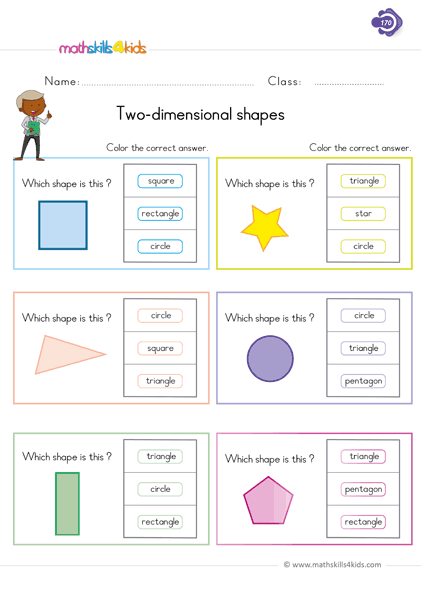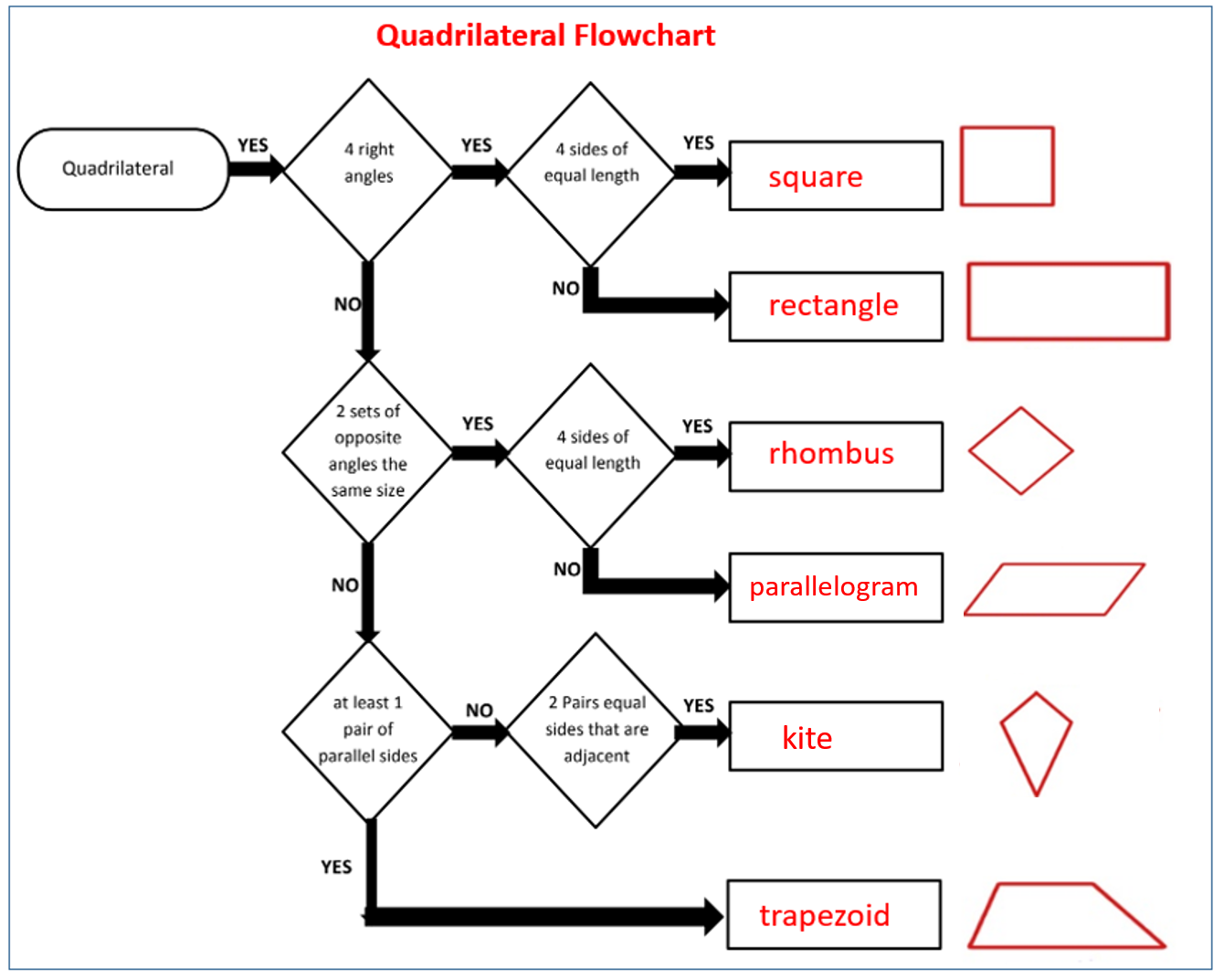

knowing and using properties of 2d shapes - sides, symmetry, right angles.identify simple properties of 2d shapes - sides, corners, right angles.identifying and sorting other 2d shapes.identify and name members of the triangle family, e.g.drawing shapes using positional language - inside, above, below.

Polygon: A polygon is a 2D shape with straight sides.There are a range of geometry worksheets set out in different sections as follows: Kite: A quadrilateral with two pairs of sides that are same length. One pair of diagonally opposite sides is equal. Parallelogram: A quadrilateral with both pairs of opposite sides parallel and both pairs an equal length. Trapezium: A quadrilateral with one pair of parallel sides. (Differs from a square in that angles are NOT 90˚). Rhombus: A quadrilateral with both pairs or opposite sides parallel and all sides equal length. Right-angled triangle: A triangle that has a right angle. Scalene triangle: A triangle with 3 sides that are all unequal. Isosceles triangle: A triangle with 2 equal sides. illustrate and name parts of circles, including radius, diameter and circumference, and know that diameter is twice the radiusĮquilateral triangle: A triangle with 3 equal sides and 3 equal angles.find unknown angles in triangles, quadrilaterals and regular polygons.recognise, describe and build simple 3D shapes, including making nets.draw 2D shapes using given dimensions and angles.classify 2D and 3D shapes by talking about parallel and perpendicular edges and faces.distinguish between regular and irregular polygons.find missing lengths and angles of rectangles.estimate and compare acute, obtuse and reflex angles.


sort, make and describe common 2D and 3D shapes.3D shapes including cubes, cuboids, pyramids and spheres.2D shapes including rectangles, squares, circle and triangles.In Year 1, children need to be able to recognise and name: Children are expected to be able to name these shapes, and also discuss the properties of these shapes. Teachers will often talk about the fact that 2D shapes are 'flat' and 3D shapes are not. The first thing they need to learn is the difference between 2D and 3D shapes. Throughout their time at primary school, children will be taught about various 2D (two-dimensional) and 3D (three-dimensional) shapes.


 0 kommentar(er)
0 kommentar(er)
